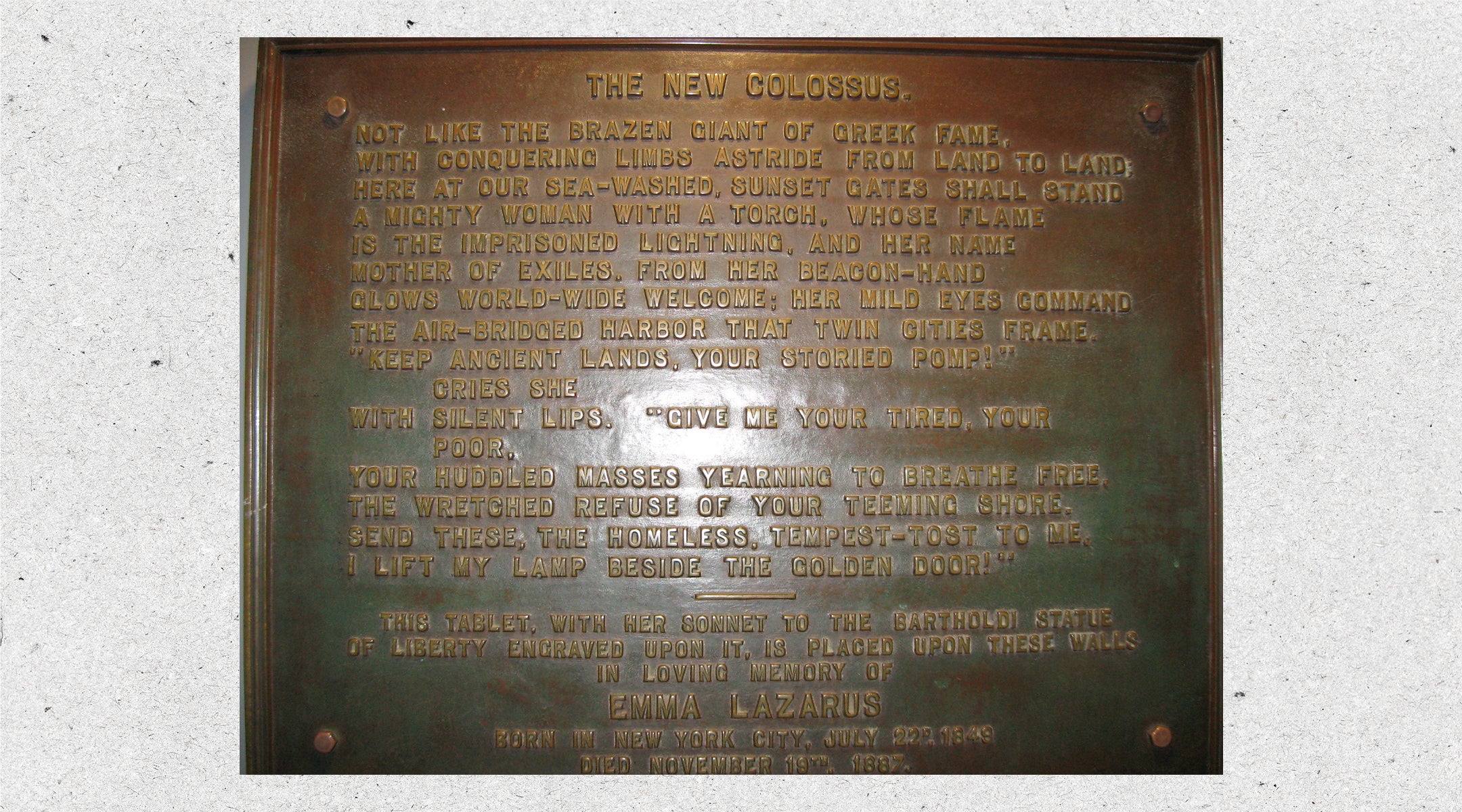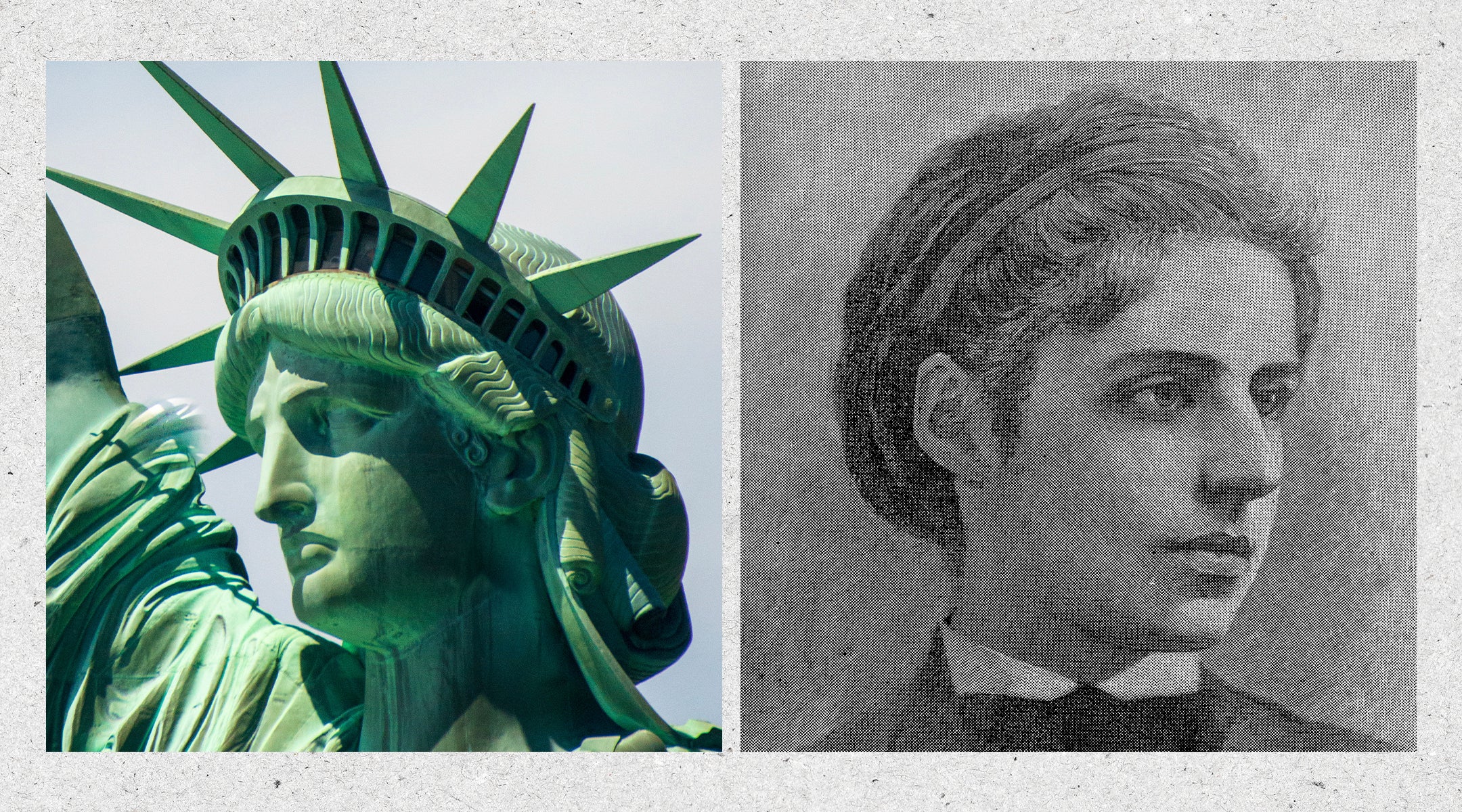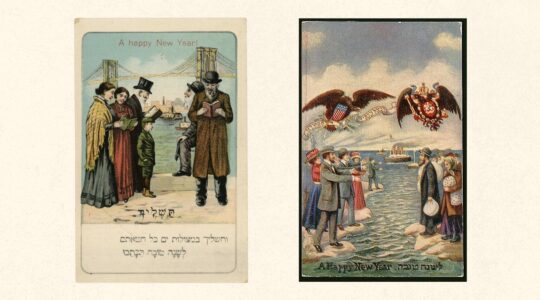On this day in 1849, Jewish writer and activist Emma Lazarus was born in New York City.
Lazarus is, of course, most famous for “The New Colossus,” the sonnet with the famous lines “Give me your tired, your poor/Your huddled masses yearning to breathe free” that’s practically synonymous with the Statue of Liberty.
The poem — which was written in 1883 for an exhibition designed to raise money to build the statue’s pedestal — gives voice to the Statue of Liberty, which was initially designed by Frédéric Auguste Bartholdi as tribute the Enlightenment and Franco-American friendship. Lazarus’ words transformed the statue into a “Mother of Exiles” who served as a beacon of hope for immigrants arriving at New York Harbor.
“The New Colossus” may be Lazarus’ lasting legacy, but she was far more than just a one-hit wonder. Among her many achievements, Lazarus was a well-known intellectual about town, a tireless advocate for Jewish refugees, a leading authority on and translator of German-Jewish poet Heinrich Heine and the creator of groundbreaking Jewish-American literature.
“She was a woman so far ahead of her time that we are still scrambling to catch up with her — a feminist, a Zionist and an internationally famous Jewish American writer before these categories even existed,” according to Esther Schorr, author of the excellent biography, “Emma Lazarus.”
Raised in a wealthy Jewish family in Manhattan, Lazarus was the fourth of seven children and was privately tutored in literature and languages. Her father, Moses, encouraged Lazarus to pursue her education, and she began writing poetry at a young age. As her sister, Josephine once wrote, the Civil War (1861-1865) inspired her “first lyric outbursts.”
In the ensuing years, Lazarus published a wide variety of poetry and prose in the leading secular periodicals of her day, and she also wrote a series of articles, “An Epistle to the Hebrews,” for “American Hebrew” on the leading Jewish communal issues of the time, including antisemitism and Jewish unity.
Tragically, Lazarus died at the young age of 38 in 1887, likely from Hodgkin’s lymphoma.
In honor of what would have been Lazarus’ 176th birthday, keep scrolling for 10 facts about this pathbreaking Jewish woman.

Emma Lazarus’ “New Colossus” is practically synonymous with New York Harbor’s Statue of Liberty (Wikimedia Commons)
1. Lazarus was a fifth-generation American Jew: Her ancestors were among the 23 Sephardic Jews who arrived in New York on Sept. 13, 1654, creating the first organized Jewish community in the city.
2. Lazarus’ first book of poems was privately published by her father when she was 16; the following year, “Poems and Translations” was commercially published.
3. Lazarus’ early work caught the attention of Ralph Waldo Emerson, who became her friend and mentor.
4. Lazarus grew up secular and was not especially attuned to Jewish communal issues. But that all changed in 1881-82, following a series of violent pogroms against Jews in Russia. Lazarus became an outspoken advocate for the waves of Jewish refugees landing on New York’s shores, volunteering with the Hebrew Emigrant Aid Society (later HIAS) and establishing relief organizations of her own.
5. Her 1882 book, “Songs of a Semite” is considered “the first collection of poetry to explore Jewish American identity while struggling with the problems of modern poetics.”
6. Lazarus was an early advocate for a Jewish homeland. That same year, 1882 — some 15 years before the First Zionist Congress, and before the word “Zionism” was coined — Lazarus became “the first well-known American publicly to make the case for a Jewish state,” according to Schorr.
7. Lazarus wrote “The New Colossus” in 1883, when she was 34. The poem was commissioned as part of a fundraiser to support building a pedestal for a large-scale gift from France: the Statue of Liberty.
8. Following the fundraiser, the poem was largely forgotten. The Statue of Liberty opened to the public in 1886; it wasn’t until 1903 that “The New Colossus” was cast in bronze and put on display inside the base of the statue.
9. Lazarus died at age 38 on Nov. 19, 1887. Her grave can be found at Beth Olam Cemetery in Cypress Hills, Brooklyn.
10. A plaque honoring Lazarus was unveiled at Battery Park on Oct. 5, 1955, as JTA reported at the time.
11. Lazarus’ hometown, New York City, has a public high school named after her. Fittingly, the Emma Lazarus High School on the Lower East Side is tailored to English language learners; its 315-student population comprises more than 18 different language groups.
The New York Jewish Week brings you the stories behind the headlines, keeping you connected to Jewish life in New York. Help sustain the reporting you trust by donating today.





